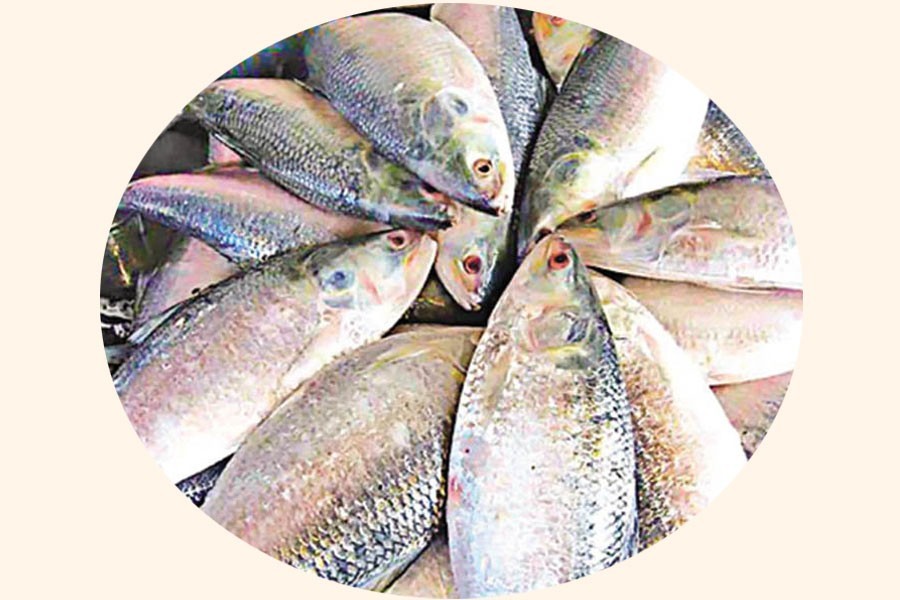
Published :
Updated :

This year's 22-day ban on catching and selling hilsa yielded more fruitful results compared to the previous years'. Beginning on October 4, the ban ended on October 25. Since its start in 2008-09, the countrywide ban on catching and marketing the national fish has been proving progressively effectual. In the beginning period 12 -13 years ago, the government ban enforced in a few hilsa producing districts was met with large-scale non-compliance. The fishermen, on instigation by a section of businesses and middlemen, vehemently protested the government directive. During the initial bans of varying lengths, the hilsa became a centre of agitation and wild speculations, which later proved baseless.
Thanks to the relentless stance taken by the authorities concerned the ban started taking hold finally. The prohibition on catching mother hilsas, which swim upstream from the Bay of Bengal, and the country's southern rivers, resulted in the continued increase in the full-grown fish populations. It is true the Fisheries and Livestock Ministry couldn't promptly provide the hilsa catchers with their promised emergency food and monetary reliefs; but they eventually became a part of the system. Years into the ban slapped on 38 hilsa-dominant areas and several others linked to the fish's supply, the yearly ban could now be termed well in place. However, allegations of clandestine catching and hoarding are still there. So are the reports of raids by the law enforcers and seizure of fishing nets as well as arrests of those who defy the ban.
It was after the detection of a drastic decline in the hilsa population that the government had decided to go tough on indiscriminate netting of the mother hilsa. The period the authorities chose for putting the ban into effect was the fish's prime time of spawning. The period comprises the late monsoon months --- from August to October. The three-month period is regarded as the peak hilsa season. Besides the prohibition on catching hilsa, the ban also covers a broad area of activities. It includes selling and transporting the most popular fish in the country. Apart from Bangladesh, hilsa is equally popular in the Bangla-speaking belts in the Indian states of West Bengal and Tripura. The fish enjoys a great demand among Bangladeshis and Bangla-speaking Indians living in North America, Europe and the Gulf countries. In tandem with its rising export potential, observers feel that the government ought to broaden its spotlight on the still-untapped prospects for hilsa export. According to the fisheries ministry, hilsa production jumped from 0.3 million tonnes in 2008-09 to 0.5 million tonnes in 2017-18. In 2019, the volume shot to 0.53 million tonnes.
The hilsa zone comprises a vast swathe of the Indian Ocean. According to marine biologists, hilsa (Tenualosa Ilisha) or shad is an adromous fish species widely distributed in the North Indian Ocean, mainly in the Bay of Bengal. Hilsa comprises 10 per cent of the total fish production of Bangladesh, with a market value of $1.74 billion. Compared to other fishes, hilsa is still quite expensive for the low-income people. Even during the peak season, the fish enters the kitchen of the urban middle class people at long intervals. The scene was strikingly different 30 to 40 years ago. The reasons vary from overfishing, mindless netting of spawning hilsas and the fishermen's swoops on the hilsa reserves at the Meghna estuaries. Hostile activities have compelled the highly sensitive hilsa to desert their age-old spots of spawning. A ban has been in place. But a more effective one and awareness among the hilsa fishing community can stop the fish's migration permanently.


 For all latest news, follow The Financial Express Google News channel.
For all latest news, follow The Financial Express Google News channel.